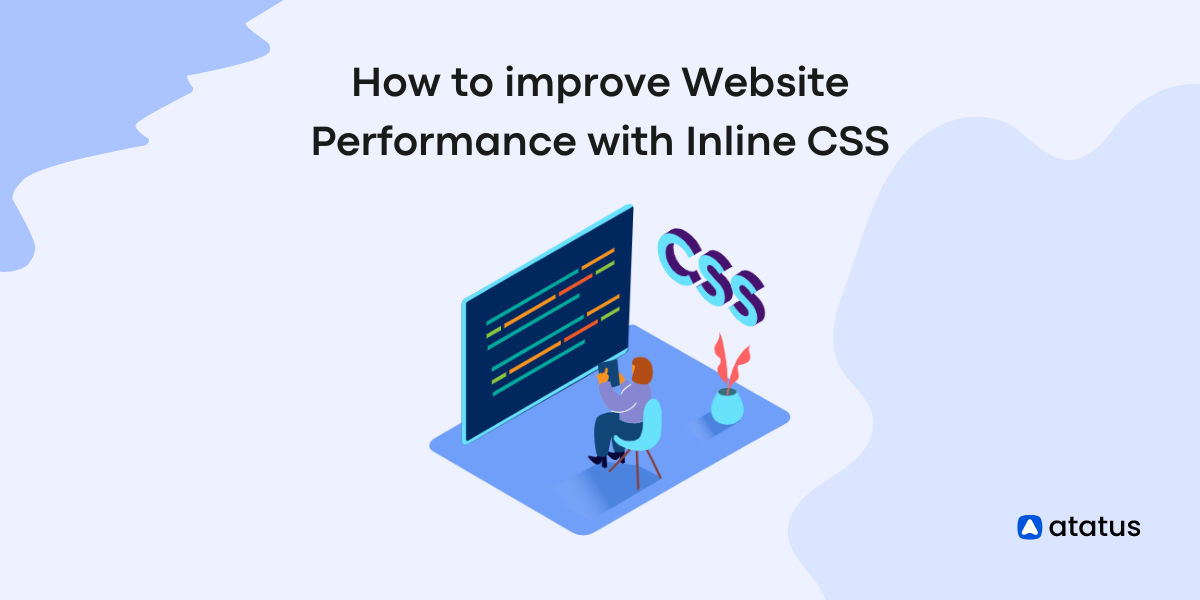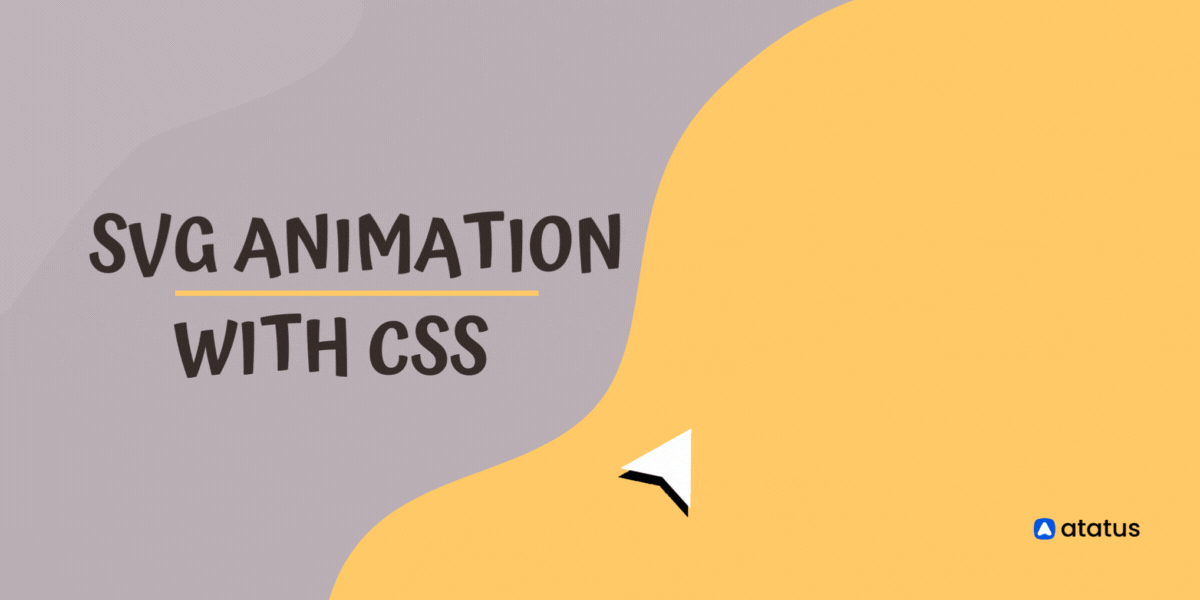How to improve Website Performance with CSS Inlining?
According to the portent, the website conversion rates drop by 4.42% with an increase each second during page load.
The above stats signify how crucial it is for developers to craft rapid websites for their clients. However, if you’re new and unaware of the development of best practices, achieving performance can be a hassle.
Apart from using the right images and clean codebase, factors such as CSS file size, data flow, etc. can also impact the website's performance.
If you’re planning to learn ways, you can use the CSS for enhancing your website’s performance, stay tuned! With this blog, we will look into how you can use inline CSS to improve the overall performance along with a sneak peek into CSS best practices.
Table of content
- What is CSS?
- How does external CSS hamper website performance?
- CSS Inlining: An alternate for website performance enhancement
- Mistakes to avoid in CSS Inlining for effective website performance
- Performance Optimization: Best Practices in CSS
What is CSS?
CSS is an acronym for "Cascading Style Sheets". A CSS stylesheet specifies how documents should be presented to users - how they should be styled, laid out, etc.
A style sheet is a collection of rules that tells a web browser how to display a document written in HTML or XML.
CSS is used to style all HTML tags, including the document's body, headings, paragraphs, and other pieces of text. CSS can also be used to style the display of table elements, grid elements, and images.
There are three ways to add styles in your HTML:
- External CSS
- Internal CSS
- Inline CSS
External CSS
External style sheets are usually stored in a file with a .css extension and can be shared by multiple HTML documents.
When a web browser loads an HTML document, it will also load any external stylesheets that are referenced in the document. The CSS rules in the external stylesheet will then be applied to the HTML document, resulting in the document being displayed according to the rules defined in the stylesheet.
External CSS from external sources can either be found in your app folder or may come from third-party sites, such as CDN servers.
Example:
<head>
<link rel="stylesheet" type="text/css" href="/styles/index.css">
</head>// /styles/index.css
body {
background-color: #981232;
}
h1 {
color: blue;
font-size: 20px;
font-family: verdana;
font-style: italic;
}Example with CDN:
<head>
<link rel="stylesheet" href="https://maxcdn.bootstrapcdn.com/bootstrap/3.4.1/css/bootstrap.min.css">
</head>Internal CSS
An internal stylesheet is a CSS stylesheet placed within the head element of an HTML document. Internal style sheets are used to style the content of a specific HTML document.
They can be used to override the styles of an external stylesheet or to style the document if an external stylesheet is not used.
Example:
<head>
<style>
h1 {
color: red;
margin-left: 20px;
}
p {
color: blue;
}
</style>
</head>Inline CSS
Inline CSS is a type of CSS that is applied to an individual element. Inline CSS is written within the start tag of an element, using the style attribute, and is the most common method of adding CSS to a web page. Inline CSS is quick and easy to use, and is the most efficient way to style a small number of elements on a page.
<!DOCTYPE html>
<html>
<head>
<title> Inline Styles </title>
</head>
<body>
<p style="color:blue; font-size:46px;"> Atatus is one of the best APM tool. </p>
</body>
</html>The <p> tag with the inline style attribute:
<p style="color:blue; font-size:46px;"> ... </p>How does external CSS hamper website performance?
CSS is an irreplaceable aspect of the web development process. However, apart from JS, images, and media files, it also alters website performance for both better and worse.
External CSS files can hamper website performance because they are render blocking. This means that the browser has to wait for the CSS file to download before it can render the page. This can cause delays and make the page appear to load slowly. And if those external CSS files are large or numerous, the impact on performance can be even greater.
In addition, external CSS files can be cached by the browser, which means that they are downloaded only once and then stored locally. This can save time when loading subsequent pages, but it can also cause problems if the CSS file is updated on the server but not on the client.
For example, let’s say you have a style sheet embedded in your .html file as below:
<head>
<link rel="stylesheet" href="https://maxcdn.bootstrapcdn.com/bootstrap/3.4.1/css/bootstrap.min.css">
<link rel="stylesheet" type="text/css" href="/styles/base.css">
<link rel="stylesheet" type="text/css" href="/styles/header.css">
<link rel="stylesheet" type="text/css" href="/styles/footer.css">
<link rel="stylesheet" type="text/css" href="/styles/product.css">
</head>
<body>
...
</body>Before your browser loads the page, it’ll have to fetch fonts.css, product.css, header.css and footer.css. Larger files will have an adverse impact on the page. It can also add precious milliseconds to the page load times.
If over a period of time your style sheet increases in complexity, this can hamper a considerable amount of user experience.
This increases in complexity, in the long run, can negatively affect the website’s load speed, user experience, and increase the overall bounce rate.
To avoid such hindrance caused by complex CSS style sheets finding a suitable alternative is essential. Let’s look into how adapting to inline CSS as an alternative to the traditional style sheet can help in enhancing website performance.
CSS Inlining: An alternate for website performance enhancement
Inlining is the method of embedding your code directly into the area or element where it will be used, this practice was originally introduced in C programming. Inline CSS is the practice of inlining your CSS elements into your HTML code.
Inlining the CSS within HTML tags saves your server from the trouble of performing network requests while loading the webpage and hence improves the overall performance effectively.
Inlining can be achieved through two ways:
- By adding the styles altogether in the same HTML file, inside the
<head>tag. - By adding the styles in the HTML start tag of an element.
When adding styles to the start tag of an element, it can look clumsy. It is recommended that you inline your CSS in the head tag itself to improve website performance as illustrated below:
<head>
<style type="text/css">
body {
background: #F9F8FF;
color: #715482;
margin: 3px;
}
.link {
color: #5E17EB;
}
tr {
border-collapse: collapse;
}
tr td {
padding: 3px;
}
.text-left {
line-height: 1.2;
text-align: left;
width: 600px;
}
#inline {
display: inline;
}
</style>
</head>With this approach, you can save up on time required to fetch content from an external file and refer to the CSS element within the html codebase for styling reference.
However, if you end up dumping all your CSS codebase in the HTML file, this could lead to even more long-term complications.
Hence, inlining your CSS is a practice that you must adapt mindfully. To ensure inlining your CSS contributes to performance optimization, prioritizing inlining critical CSS elements while using external files for the rest of your code can be a great way forward. To identify critical CSS elements, adapt to tools such as Penthouse and Critical.
Mistakes to avoid in CSS Inlining for effective website performance
Now that you know how to use inline CSS to enhance the website performance effectively, it’s time to understand a few don’ts of inlining your CSS so that you accidentally don’t wreck an apocalypse in your codebase.
Here is a list of a few inlining CSS practices you must avoid to ensure your solution performs at its best:
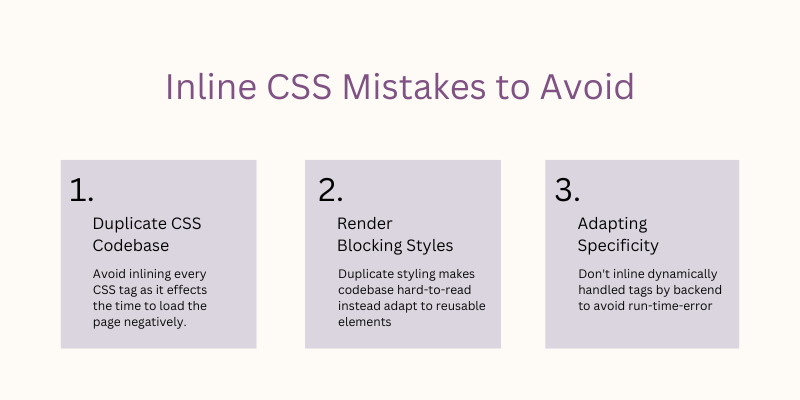
1. Load-time issues due to Render Blocking
Although from the examples explained above we can say that inlining CSS can optimize performance overdoing it can become a hassle. As, if you go on inlining every CSS in your HTML tags it can adversely affect the first contentful paint time (i.e. time to load a div class).
2. CSS Duplication
While inlining your CSS, you might end up making duplicate CSS elements throughout your HTML file if you’re not careful enough. This redundancy will not only make your codebase a hassle to manage but will also make future refactoring an irksome task. Instead, you can convert such files into reusable elements for enhanced performance.
3. Adapting Specificity
Inlining your CSS can be a great aid in performance. However, for HTML tags that are dynamically handled in the UI, inlining can make overwriting the natural flow a hassle and increase the chances of run-time errors. Hence, in such cases staying away from inlining the CSS would be a smart choice.
Performance Optimization: Best Practices in CSS
Now that you know all about inlining CSS to increase the overall performance you’re all set to create rapid websites. However, inlining is not the only way to use CSS for performance enhancement, here are a few more performance hacks that you can use to optimize your CSS:
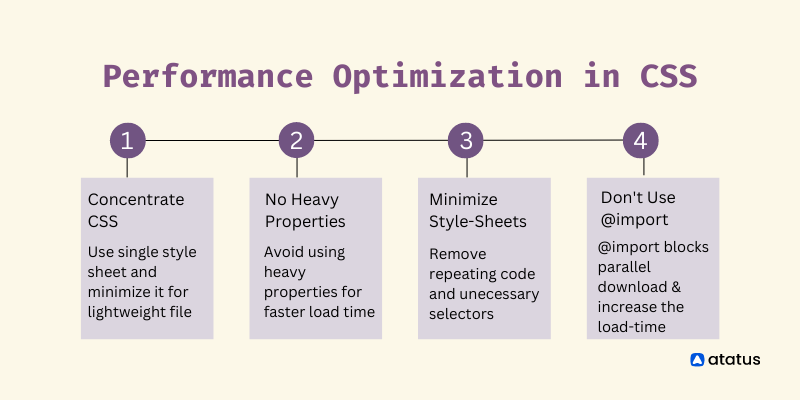
1. Concentrate CSS
Less is more when it comes to CSS. Always thrive to concentrate your CSS into a single and use a minimized version of it. It will reduce the file size of your style sheet and make it easier to load.
2. Avoid heavy properties
Some CSS properties may make your file size significantly heavier and hence harder to load in the long run. Properties such as border-radius, box-shadow, transform, :nth-child, filter, and position: fixed; should always be used with care to ensure effective performance.
3. Minimize the style-sheet size
The more lightweight your style sheet is the easier it becomes to load. So always make sure that your stylesheet is free of unnecessary selectors and duplicate CSS to ensure fast performance. You can further use tools such as uncss to identify such elements.
4. Bid adieu to @import
When you use @import for fetching your style sheet it instantly blocks parallel downloads, which negatively affects the download speed. A suitable alternative to this is to use the link tag in your html to access the style sheet.
Final Words
Performance plays an essential factor in any website’s success. Hence, a rapid and scalable website is an unsaid necessity for many businesses. By inlining your CSS and adapting to the above mentioned best practices, you can easily create websites with lightning performance with no hassle.
Atatus Real User Monitoring
Atatus is a scalable end-user experience monitoring system that allows you to see which areas of your website are underperforming and affecting your users. Understand the causes of your front-end performance issues and how to improve the user experience.
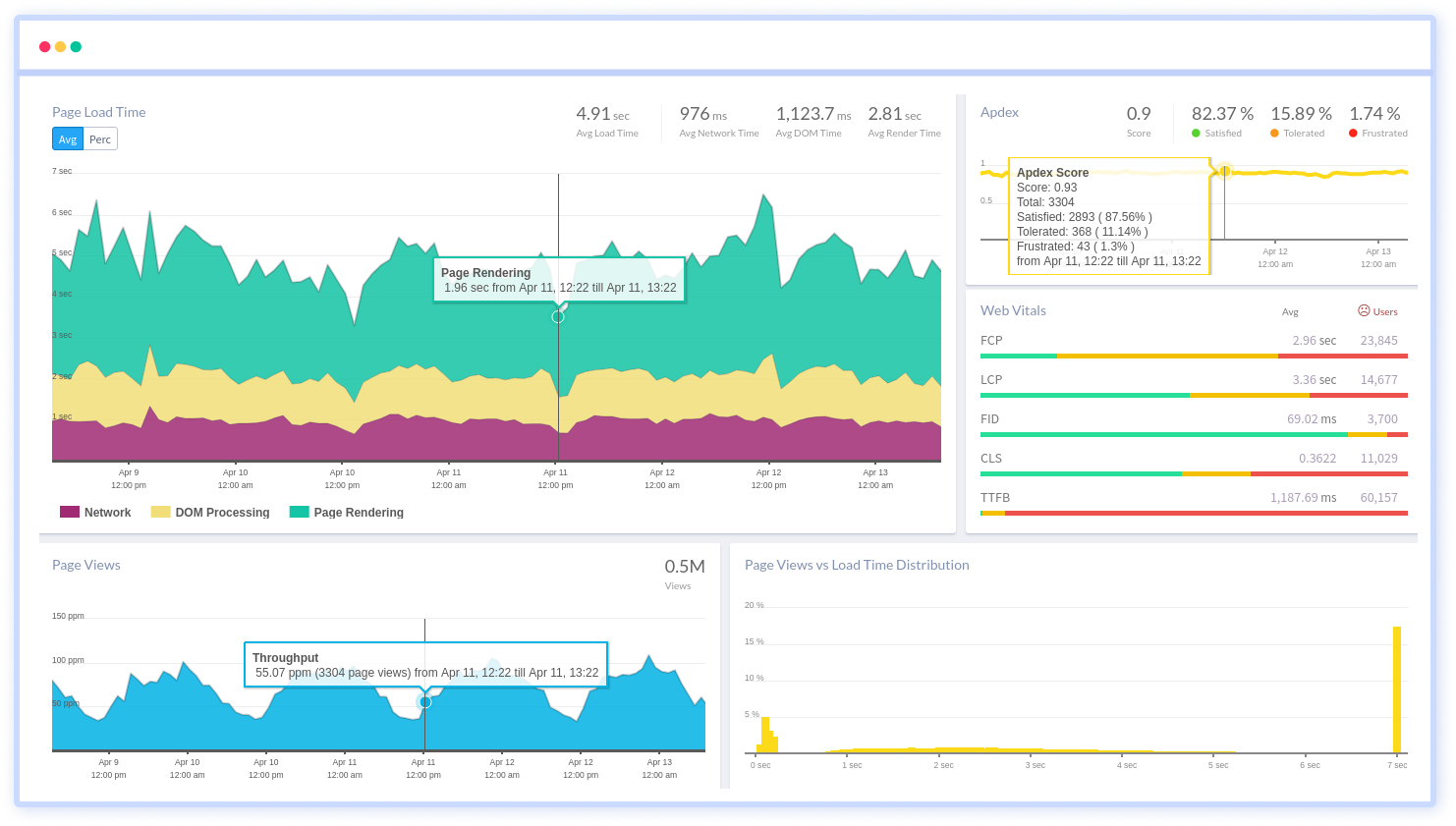
By understanding the complicated frontend performance issues that develop due to slow page loads, route modifications, delayed static assets, poor XMLHttpRequest, JS errors, core web vitals and more, you can discover and fix poor end-user performance with Real User Monitoring (RUM).
You can get a detailed view of each page-load event to quickly detect and fix frontend performance issues affecting actual users. With filterable data by URL, connection type, device, country, and more, you examine a detailed complete resource waterfall view to see which assets are slowing down your pages.
#1 Solution for Logs, Traces & Metrics
APM
Kubernetes
Logs
Synthetics
RUM
Serverless
Security
More

